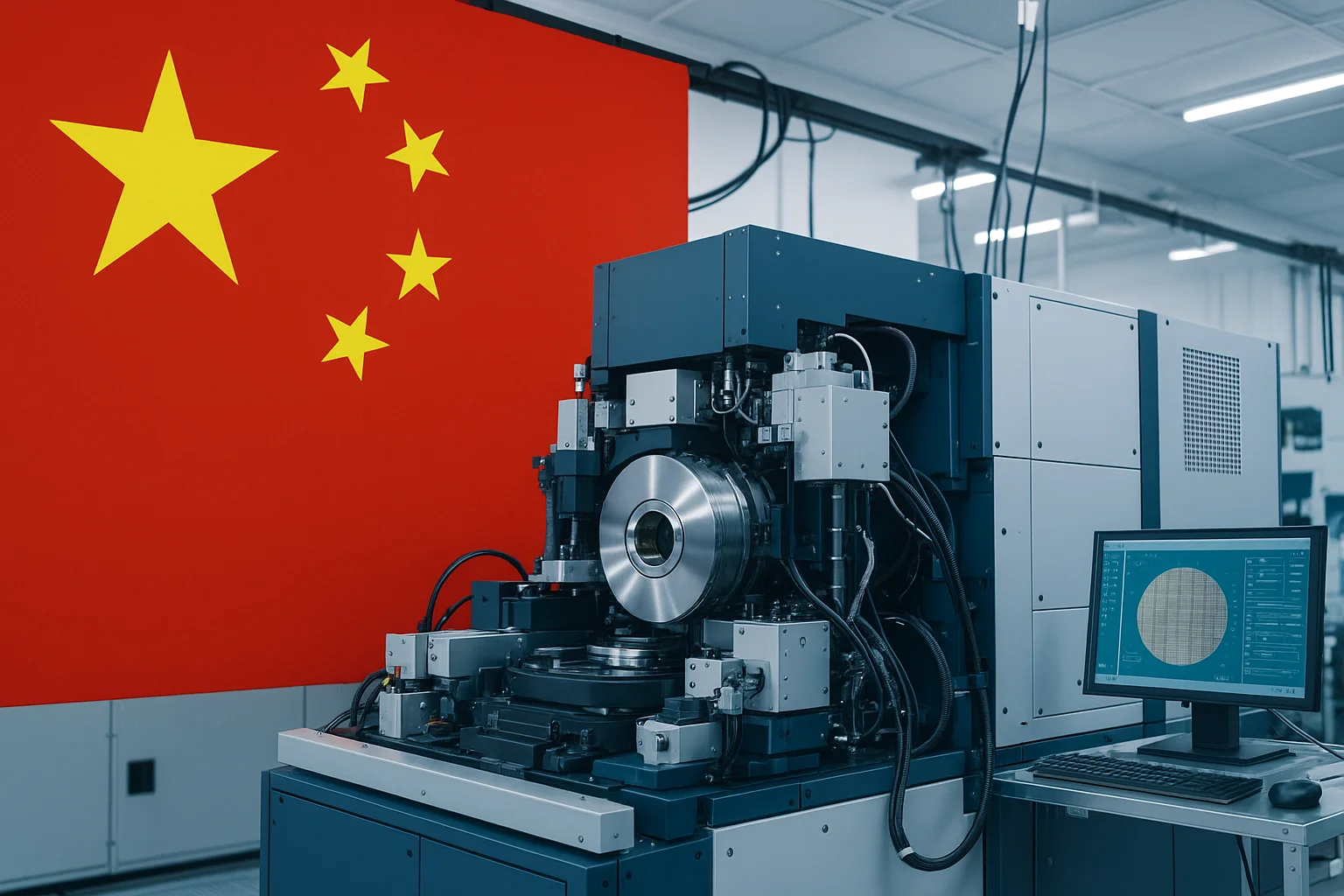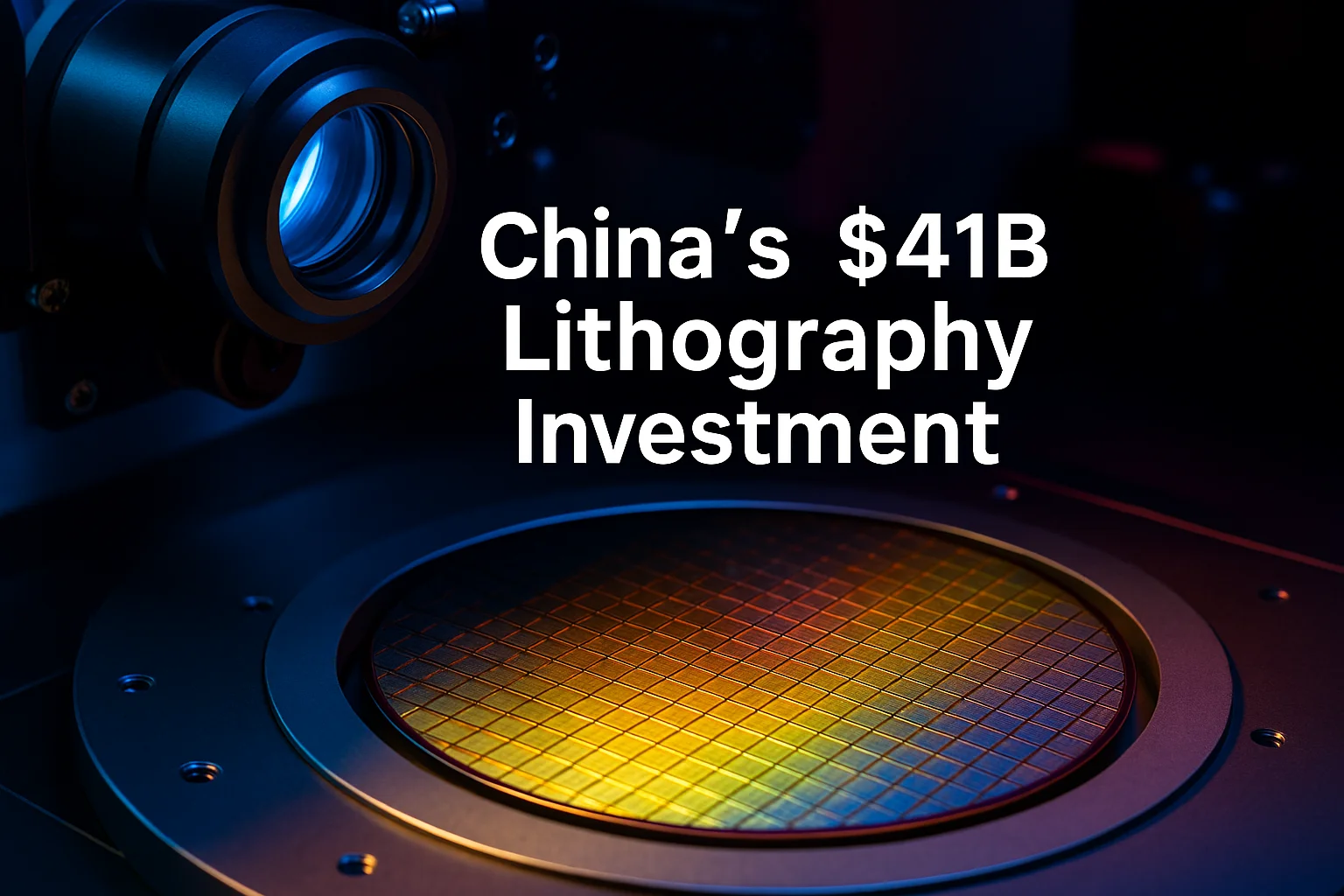Introduction: Why This $41B Matters More Than Any Other Investment
In the twenty-first century, semiconductors are more valuable than oil. They power every smartphone, every car, every plane, and every supercomputer. Behind every chip lies an invisible giant: lithography. Without it, microchips would never shrink, Moore’s Law would collapse, and innovation would stall.
This is why china’s $41b lithography investment is not just about money—it’s about national survival, global competition, and the future of technology. China is pouring billions into mastering a field where it lags behind global leaders like ASML, Nikon, and Canon. The stakes? Control over the most critical machines of the digital economy.
The Backdrop: Global Semiconductor Power Struggles

To understand the weight of china lithography investment, we need to step back.
- United States dominates chip design with firms like Intel, Nvidia, and AMD.
- Taiwan (TSMC) and South Korea (Samsung) lead chip manufacturing.
- Europe (ASML) controls the crown jewel: EUV lithography machines.
But China, despite being the world’s largest consumer of semiconductors, imports most of its chips. This dependency is a vulnerability—especially amid trade tensions and export bans. Hence, china semiconductor lithography investments are about breaking free from Western technology choke points.
Breaking Down China’s $41B Lithography Investment
The massive china’s $41 b lithography investment 2021 initiative was primarily fueled through the China Integrated Circuit Industry Investment Fund (often called the “Big Fund”). This sovereign fund channels state capital into strategic tech sectors, with lithography at the center.
Key allocations include:
- Domestic lithography machine R&D – focusing on DUV lithography and eventually EUV lithography.
- Support for SMEE lithography – China’s leading local lithography manufacturer, pushing to catch up with ASML.
- University & Research Partnerships – establishing academic-industrial pipelines for LDP lithography and next-gen technologies.
- Supply Chain Localization – ensuring critical components (optics, resists, lasers) are sourced domestically.
This china lithography semiconductor technology investment is not just a reaction to sanctions. It’s a vision for long-term independence.
Why Lithography Is the Bottleneck in Chipmaking
Lithography is the process of printing tiny circuits onto silicon wafers using light. Its precision determines chip performance.
- DUV lithography: Currently mastered by Chinese firms like SMEE. Useful for mature nodes (28nm–90nm).
- EUV lithography: The holy grail, allowing 7nm and below. Controlled by ASML (Netherlands).
- LDP lithography: An emerging method with potential for niche applications.
The Lithography machine is the single most complex tool in the world—more advanced than rockets or jet engines. One EUV system has over 100,000 parts and costs more than $150 million.
This explains why Euv lithography investment is central to China’s strategy: without EUV, cutting-edge chips are impossible.
Comparing Global Approaches: West vs China
| Country/Region | Strategy | Strengths | Weaknesses |
| United States | Design dominance, export bans | Nvidia, AMD, Intel | No domestic EUV |
| Taiwan (TSMC) | Contract manufacturing | 3nm leadership | Geopolitical risk |
| South Korea | Memory chips & fabs | Samsung DRAM/NAND | Still reliant on EUV imports |
| Europe (ASML) | EUV monopoly | Exclusive tech | Market reliance on US allies |
| China | china lithography investment | Scale, state support | Technology gap |
This Lithography market comparison shows why China’s investment is unprecedented in scope and ambition.
Case Study: SMEE Lithography – China’s Best Bet
Shanghai Micro Electronics Equipment (SMEE) is the flagship of china semiconductor lithography investments.
- Strengths: Strong progress in DUV lithography, capable of 90nm nodes.
- Weaknesses: Still years behind ASML’s EUV.
- Future: With billions in funding, SMEE aims to crack EUV lithography by 2030.
The Lithography investment review from 2022 suggests that SMEE’s incremental progress is critical. While global observers doubt rapid breakthroughs, China’s long-term persistence may surprise.
Beyond Chips: Lithography as an Investment Asset
Interestingly, art investing paintings vs lithography provides a unique analogy. Just as art investors weigh the rarity and value of paintings versus lithographs, governments weigh semiconductor dominance versus mature-node investments. Both require patience, long horizons, and risk tolerance.
China’s approach resembles a diversified investment portfolio: invest in both DUV lithography (safe returns) and EUV lithography (high-risk, high-reward).
Challenges Ahead
Despite china lithography semiconductor technology investment, challenges remain:
- Technology Gap – EUV mastery is still years away.
- Sanctions – U.S. export bans prevent ASML from selling EUV to China.
- Talent Drain – Experienced engineers often migrate to Taiwan or the West.
- Supply Chain Bottlenecks – Precision optics and high-end resists are still imported.
Yet history shows China excels at long-term catch-up strategies—whether in high-speed rail, solar panels, or 5G.
The Future: What China’s $41B Move Means for the World
The implications of china’s $41b lithography investment are massive:
- For China: Potential self-reliance and a stronger domestic chip ecosystem.
- For the World: More competition could drive innovation and lower costs.
- For Geopolitics: A new flashpoint in U.S.–China rivalry.
If successful, China could disrupt the monopoly of ASML, altering the entire Lithography market balance.
Frequently Asked Questions (FAQ)
Q1: What is china’s $41b lithography investment?
A: It’s a state-backed funding initiative through the China Integrated Circuit Industry Investment Fund to accelerate China’s lithography machine development.
Q2: Why is lithography so critical to semiconductors?
A: Lithography prints nanoscale circuits on chips. Advanced nodes like 7nm require EUV lithography, which China currently lacks.
Q3: Can China develop EUV lithography machines?
A: Not yet. SMEE lithography has made progress with DUV lithography, but EUV may take another decade to master.
Q4: How does china lithography investment affect global markets?
A: It creates competition for ASML, reshapes the Lithography market, and potentially reduces Western dominance.
Q5: What’s the difference between art investing paintings vs lithography and semiconductor lithography?
A: One is about collectible art value, the other about chip manufacturing. Both, however, share themes of long-term investment strategy.
Conclusion: A Race Written in Light
In the story of technology, few moments shine as brightly as china’s $41b lithography investment. It is not just an economic move, but a declaration of independence from global dependency.
While China faces daunting obstacles—sanctions, knowledge gaps, supply chain limits—the persistence of a $41B vision cannot be underestimated. The China Integrated Circuit Industry Investment Fund is planting seeds that may take years to grow, but when they do, the entire global Lithography market will shift.
Like the light that carves circuits into silicon, China’s determination is etching its place into history. Whether it succeeds or fails, one truth is undeniable: the race for lithography is the race for the future.


